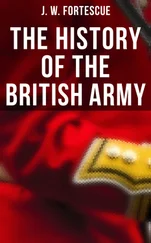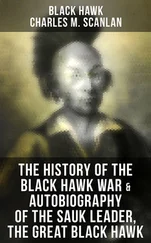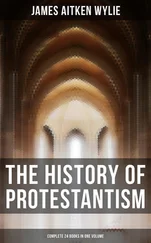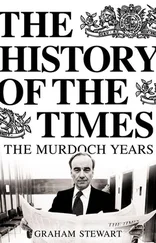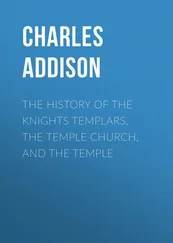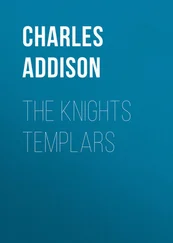James Burnes - Sketch of the History of the Knights Templars
Здесь есть возможность читать онлайн «James Burnes - Sketch of the History of the Knights Templars» — ознакомительный отрывок электронной книги совершенно бесплатно, а после прочтения отрывка купить полную версию. В некоторых случаях можно слушать аудио, скачать через торрент в формате fb2 и присутствует краткое содержание. Жанр: foreign_antique, foreign_prose, Историческая проза, на английском языке. Описание произведения, (предисловие) а так же отзывы посетителей доступны на портале библиотеки ЛибКат.
- Название:Sketch of the History of the Knights Templars
- Автор:
- Жанр:
- Год:неизвестен
- ISBN:нет данных
- Рейтинг книги:4 / 5. Голосов: 1
-
Избранное:Добавить в избранное
- Отзывы:
-
Ваша оценка:
- 80
- 1
- 2
- 3
- 4
- 5
Sketch of the History of the Knights Templars: краткое содержание, описание и аннотация
Предлагаем к чтению аннотацию, описание, краткое содержание или предисловие (зависит от того, что написал сам автор книги «Sketch of the History of the Knights Templars»). Если вы не нашли необходимую информацию о книге — напишите в комментариях, мы постараемся отыскать её.
Sketch of the History of the Knights Templars — читать онлайн ознакомительный отрывок
Ниже представлен текст книги, разбитый по страницам. Система сохранения места последней прочитанной страницы, позволяет с удобством читать онлайн бесплатно книгу «Sketch of the History of the Knights Templars», без необходимости каждый раз заново искать на чём Вы остановились. Поставьте закладку, и сможете в любой момент перейти на страницу, на которой закончили чтение.
Интервал:
Закладка:
19
"Quod clam consueverunt tenere capitula sua;" and "Quod similem clandestinitatem observant et observare consueverunt ut plurimum in recipiendo fratres," were principal counts in the indictment against them. From this secrecy, some writers have inferred that the Templars practised a species of Freemasonry, of which certainly no direct evidence transpired during the inquest. Signor Rosetti, the celebrated commentator of Dante, has, we understand, a work in the press, in which he seeks to demonstrate that the Templars were a branch of that great secret confederacy which was formed against the papacy, which included the Troubadours and all the literati of the time, and which ultimately produced the Reformation. This information is derived from a letter to Dr. Burnes by Mr. Keightly, the talented reviewer and friend of Rosetti.
20
In June 1310, Pope Clement wrote to the King of England blaming his lenity, and calling upon him to employ the torture upon the unfortunate Knights. The Council of London, after a long discussion, ordered it to be employed, but so as not to mutilate the limbs, or cause an incurable wound, or violent effusion of blood.
21
The Knights of Christ have continued to exist as a recognized Order of Knighthood down to the present day. The supremacy is vested in the Sovereign of Portugal, and the greater part of the revenue is understood to accrue to the royal coffers. The sums, however, paid in pensions to Knights of the Order, about the beginning of the present century, are said to have amounted to about £4000 per annum. In 1793 they possessed twenty-one provincial towns and villages, and counted four hundred and fifty-four commanderies, exclusive of colonial acquisitions. The various recent changes, occasioned by war and intestine commotions, probably have reduced their income and possessions. In 1820 the Grand Prior of Portugal was Louis Antonio de Fontado, of the House of Barbasena, and who died in 1832. We are not informed as to his successor. The Cross of the Order of Christ is sometimes bestowed upon foreigners as an honorary distinction. Dr. Bowring, (who was employed on a mission to the Portuguese Government,) and several other Englishmen, have of late years received its Cross; generally, it is believed, that of the third class of Knights.
22
An extract from the Bull, in the original Latin, will be found in the Appendix Конец ознакомительного фрагмента. Текст предоставлен ООО «ЛитРес». Прочитайте эту книгу целиком, купив полную легальную версию на ЛитРес. Безопасно оплатить книгу можно банковской картой Visa, MasterCard, Maestro, со счета мобильного телефона, с платежного терминала, в салоне МТС или Связной, через PayPal, WebMoney, Яндекс.Деньги, QIWI Кошелек, бонусными картами или другим удобным Вам способом.
.
23
Besides appropriating to himself all the moveable property of the Order, three hundred thousand livres of France were retained by the King, ostensibly to repay the expense of the prosecution. No doubt the treasure brought by De Molay from Cyprus would be amongst the first booty seized, as well as the rich gold and silver utensils and plate, with which the chapel and palace of the Temple at Paris were furnished.
24
On the 28th March 1310, no fewer than 546 Templars were assembled under a strong guard, in the gardens of the Bishop of Paris, who had been conveyed thither to make the defence of the Order, and hear read the accusations against them. This shew of justice was, of course, a mere pretence of their persecutors, to save appearances. The number of the Templars in Paris afterwards encreased to nearly 900. Ferrati of Vicenza has reckoned the entire members of the Order throughout Europe at 15,000 persons.
25
Histoire des Chevaliers Hospitaliers de Saint Jean de Jerusalem, par l'Abbe Vertot, tom. ii. pp. 101, 102.
26
So dreadful and impressive an event could not fail to be the source of many strange stories with the vulgar. Among these, chroniclers report, that the venerable martyr, ere life was extinct, summoned Pope Clement to answer before the bar of the Almighty Judge, within forty days, and King Philip before the same tribunal, within the space of a year. Certain it is, that the Pope did suddenly die in the night between the 19th and 20th of the following month; and the church in which his body was placed taking fire, one-half of the corpse was consumed, – a circumstance which naturally confirmed the people in the belief that his death was a special judgment of Heaven for the burning of the knights, and which probably also suggested the prediction. In the month of July following, a tumult arose in the town where the half consumed corpse was kept, during which the populace tried to get forcible possession of the remains; but whether from some superstitious motive, or with a view of avenging on the Pope's body the murder of De Molay, is not known. Philip of France expired within the year, in consequence of a fall from his horse, and others of the persecutors of the Order met a violent death.
27
A copy of this remarkable Charter, the original of which I had an opportunity of examining through the kindness of the Grand Master and Sir Sidney Smith, at Paris, will be found in the Appendix Конец ознакомительного фрагмента. Текст предоставлен ООО «ЛитРес». Прочитайте эту книгу целиком, купив полную легальную версию на ЛитРес. Безопасно оплатить книгу можно банковской картой Visa, MasterCard, Maestro, со счета мобильного телефона, с платежного терминала, в салоне МТС или Связной, через PayPal, WebMoney, Яндекс.Деньги, QIWI Кошелек, бонусными картами или другим удобным Вам способом.
. The Charter was submitted to the inspection of nearly 200 Knights of the Order, at the Convent-General held at Paris in 1810.
Интервал:
Закладка:
Похожие книги на «Sketch of the History of the Knights Templars»
Представляем Вашему вниманию похожие книги на «Sketch of the History of the Knights Templars» списком для выбора. Мы отобрали схожую по названию и смыслу литературу в надежде предоставить читателям больше вариантов отыскать новые, интересные, ещё непрочитанные произведения.
Обсуждение, отзывы о книге «Sketch of the History of the Knights Templars» и просто собственные мнения читателей. Оставьте ваши комментарии, напишите, что Вы думаете о произведении, его смысле или главных героях. Укажите что конкретно понравилось, а что нет, и почему Вы так считаете.

